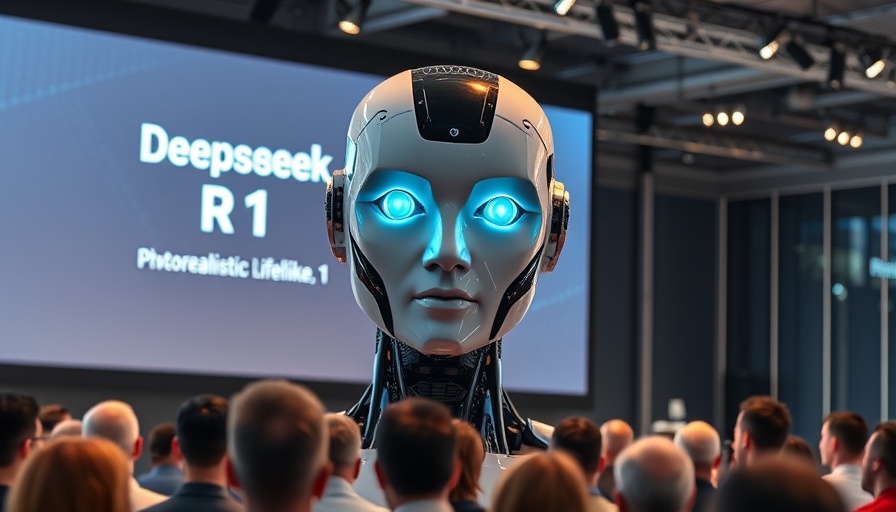
Deepseek R1: A Game-Changer in AI Technology
The recent developments surrounding Deepseek's AI model, R1, have sparked conversations across technological platforms worldwide. With such rapid advancements in artificial intelligence, it's crucial to understand the implications of this innovative technology on the broader landscape of AI development. Deepseek, a company that originated in China, has made surprising strides with its R1 model, likening its capabilities to industry titan OpenAI and Google, while maintaining lower operational costs.
In Deepseek R1 0528: The AI Bombshell That Just Changed EVERYTHING, we delve into the revolutionary changes brought by Deepseek in AI technology, exploring key insights that prompted our further analysis.
Benchmark Performance That Dares to Compete
In the competitive world of AI, performance is often quantified through benchmark testing. Deepseek's R1 model has demonstrated capabilities that not only match but sometimes surpass models from established tech giants like OpenAI's GPT series and Google's Gemini. A striking finding emerged from various performance assessments indicating that R1, trained with a budget of merely $6 million, is challenging models developed with billions in funding. This leads to critical inquiries: how can Deepseek deliver such results at a fraction of the cost, and what does this mean for the AI industry moving forward?
Cost-Efficiency: The New Imperative for AI Models
Cost efficiency stands out as a pivotal factor in the deployment of advanced AI technologies. While established options like OpenAI's models can reach upwards of $50 for specific outputs, Deepseek's R1 reportedly operates efficiently for about $3. This significant difference positions Deepseek as a potential disruptor in a market where operational costs heavily influence developer choices. The argument stands: could countless developers opt for a more economical solution over a premier model based solely on cost? If market trends continue to favor affordability, Deepseek may eat into the audience share of traditional AI providers.
What Lies Ahead? Future Insights on Deepseek’s R2 Model
The anticipation around Deepseek's next model, R2, cannot be overlooked. With rumors circulating about its release, the potential for R2 to redefine AI's capabilities is both thrilling and concerning. However, looming challenges could delay its launch significantly, especially in light of increased geopolitical scrutiny toward Chinese technology firms. Whether due to supply chain hurdles or regulatory pressures, will Deepseek be able to deliver R2 without sacrificing quality?
Understanding the Risks: National Security and AI
The specter of national security threats has plagued conversations about AI technologies, notably regarding data privacy and surveillance risks. With concerns mounting over Deepseek’s alleged ties to the Chinese government, there is an urgent debate surrounding user data security. As countries like the U.S. enact bans on the use of Deepseek technologies in government sectors, the implications become clear: national security often aligns with technological advancement in an increasingly interconnected world.
A Deeper Dive: Technical Challenges Ahead
Deepseek’s reliance on Huawei Ascend chips for training its models presents both uniqueness and significant hurdles. These domestic chips have garnered criticism for their stability and performance issues, which could amplify the timeline for R2’s release. As developers anticipate increased efficiency and innovation in AI technology, stability remains a crucial benchmark. Will Deepseek risk falling behind if these challenges cannot be navigated?
The Consumer Perspective: Will Deepseek Capture the Market?
Ultimately, the competitive advantages enjoyed by Deepseek could resonate well with a rapidly evolving consumer perspective. The current financial landscape, characterized by tightened budgets and heightened expectations for functionality, poses an inviting pathway for cheaper yet effective AI solutions. A shift in perception surrounding loyalty to brands could signify that consumers are willing to embrace products that deliver optimized performance without breaking the bank.
Conclusion: The Revolution in Progress
Deepseek’s R1 has undoubtedly altered the landscape of AI technology and compelled industry titans to reconsider their established norms and strategies. As deeper insights emerge surrounding operational costs and the ongoing development of R2, the direction of AI may shift dramatically. With all eyes on Deepseek and its response to the challenges ahead, the narrative is still being shaped. The implications of these technologies extend beyond their immediate applications and onto the larger spectrum of national policy, market evolution, and consumer preferences. It’s a narrative that demands attention—or better yet, action.
Stay informed by exploring how AI technologies are evolving and impacting everyday life. Understanding these shifts could empower you to make better decisions in your tech options.
 Add Row
Add Row  Add
Add 




Write A Comment